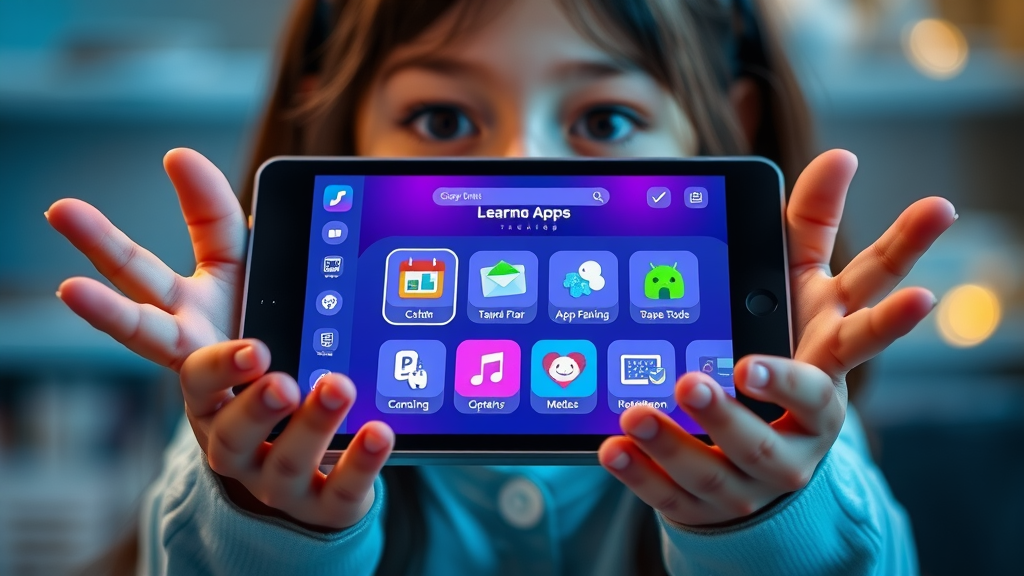- Are you preparing your children for a future shaped by artificial intelligence, or unwittingly exposing them to costly pitfalls? Discover what every parent must know.
Parent Guide AI Education: Why This Guide for Parents and Caregivers Matters in Today’s World
- The challenge of generative AI in education
- Guide to AI, Gen AI, and their rapid rise
- Why parents and caregivers play a critical role
In the digital age, the rapid rise of generative AI and related AI tools has transformed the educational landscape. While these technologies offer innovative opportunities for learning, they also present new risks and challenges. This parent guide AI education is designed to empower parents and caregivers with the understanding and resources needed to navigate these changes. By providing clear strategies with proven outcomes, this guide bridges the knowledge gap, helping families make informed decisions—while preventing the most costly mistakes.
AI systems now influence everything from classroom learning to leisure activities at home, exposing children to a wider range of information—and risks—than ever before. With gen AI tools such as ChatGPT in widespread use, parents must take an active role in deciding which AI models and platforms are appropriate, and how to support young people as they learn. The importance of parental involvement in fostering critical thinking and responsible technology use cannot be understated. By understanding both the power and the pitfalls of artificial intelligence , you lay the foundation for your child’s safe, informed digital future.

What You Will Gain From This Parent Guide AI Education
- Proven strategies to introduce children to AI responsibly
- Methods to safeguard against inappropriate content and biased info
- Tips for building strong AI literacy and critical thinking skills
- Practical roadmaps for setting safe boundaries with social media and generative AI tools
By reading this guide, you'll acquire a comprehensive guide to AI education designed specifically for parents and caregivers. You’ll learn how to introduce concepts of artificial intelligence to young children and teens in a way that balances excitement, responsibility, and safety. Actionable advice and checklists help you recognize potential risks and proactively shape your family's engagement with AI tools .
You'll also gain insight into selecting the best gen AI and AI tool options for your child’s age and maturity, as well as ideas for encouraging curiosity about technology and AI literacy. Practical strategies are included for building your child’s confidence in asking questions, evaluating information sources, and making wise use of tools like ChatGPT —all while maintaining strong digital safety boundaries.
| AI Tool | Key Features | Risks | Age Appropriateness |
|---|---|---|---|
| ChatGPT | Conversational AI, writing assistance, Q&A | Potential exposure to inappropriate content, privacy concerns | 13+ (with parental monitoring) |
| Khan Academy’s Khanmigo | Learning tutor, STEM help, tailored hints | Overreliance, possible info inaccuracies | 7+ (best with parent/teacher guidance) |
| Google Gemini for Kids | Safe search, interactive AI activities | Filtered info, potential ad exposure | 6+ (with safe search enabled) |
| DALL-E Mini | Generative art, visual creativity | Unfiltered image results, copyright | 10+ (adult supervision recommended) |
The Rise of Generative AI: What Every Parent Should Know for AI Education
- Explaining generative AI and gen AI to children
- The advantages and risks in educational settings
- Early exposure to tools like ChatGPT and generative AI tool trends
Generative AI refers to systems that can create new content—like text, images, or music—using advanced computer code trained on vast datasets. Explaining gen AI to children calls for clarity and age-appropriate examples: imagine technology that can write a story, draw a picture, or even answer questions intelligently, all generated by AI. Parents and caregivers must ensure young people understand that not all information produced by these tools is accurate or suitable. With the rapid release of chatgpt and other model innovations, it’s more important than ever to discuss these tools openly.
Integrating gen AI tools into education offers personalized learning, fast answers, and creative opportunities. However, risks such as exposure to inappropriate content or biased info require careful management. Early and positive engagement—such as co-using a generative ai tool with your child and discussing their observations—fosters awareness and safety. As AI products evolve, parental vigilance and honest dialogue are crucial to ensure children benefit from these innovations responsibly.
Common Costly Mistakes in Parent Guide AI Education
- Overlooking age-appropriate guidelines for AI tools
- Neglecting the threat of inappropriate content and biased info
- Failing to teach AI literacy and critical thinking
- Underestimating social media’s influence
A frequent and costly pitfall is giving children access to AI tools or gen AI platforms without evaluating age-appropriateness or privacy standards. Each AI model and tool has distinct risks; assumptions can leave young users exposed to inappropriate content , or relying too heavily on information that may be incomplete. Responsible AI use begins with evaluating a guide to AI products and setting strict age-based boundaries that evolve as your child matures.
Ignoring the prevalence of biased info generated by AI or failing to discuss it with your child can skew perspectives, hinder critical thinking , and even reinforce harmful stereotypes. With social media and AI increasingly intertwined, many parents underestimate how generative AI tool algorithms amplify content—sometimes leading to risky overexposure, or excessive screen time. Proactive conversations and regular review of your family's engagement with AI systems are essential to mitigate these challenges.
"AI is not just a tool—it's an ecosystem your child will inherit. Parental guidance is essential for safe navigation."
Ensuring Safe and Responsible Usage with Parent Guide AI Education
Building foundational knowledge: Artificial intelligence, AI systems, and young people
Establishing a strong understanding of artificial intelligence starts with open, ongoing conversations. Explain that AI systems are not infallible—they are computer programs capable of remarkable feats, but can make mistakes or produce unexpected outcomes. Introduce the concept of responsible AI , emphasizing common sense, digital empathy, and awareness of potential risks . By fostering curiosity and hands-on exploration together, parents and young people learn side by side, demystifying both the technology and the hype.
Guide your children in identifying trustworthy AI tools and distinguishing fact from fiction in AI-generated material. Whether using tools and product for homework or creative play, continually reinforce safe digital habits. This approach also applies to how young people interact with emerging technologies, as rapid growth in AI literacy becomes an essential skill for navigating future opportunities—and avoiding pitfalls brought by poorly understood AI models.

Tools for monitoring and controlling generative AI tools usage
Modern AI tools and systems designed for children typically include built-in parental controls—but these features are only as effective as the vigilance behind them. Leverage dashboard settings, filtering mechanisms, and device-level restrictions to monitor your child's interactions with gen AI platforms . Review history logs, set daily usage limits, and frequently check for any updates in AI tool safety features. These steps are crucial for preventing exposure to inappropriate content and maintaining a secure learning experience.
Encourage your children to report any unsettling experiences or unanswered questions while using generative AI tools . Consider using specialized third-party software audited for transparency and privacy to add an extra layer of oversight. Remember: monitoring should build trust and partnership, not secrecy. Position parental guidance as a collaborative shield—one that supports responsible exploration within healthy boundaries.
Tactics to safeguard children from inappropriate content
Safeguarding against inappropriate content begins with proactive tech hygiene and honest discussions about online safety. Activate content filters in all AI tools , enable kid-safe browsing modes, and insist on age verification wherever possible. Teach children the importance of pausing and seeking help if something online makes them uncomfortable, and demonstrate how to flag or block problematic material within generative AI tool apps.
Reinforce these tactics by discussing “digital red flags”—such as AI-generated material that feels odd, asks for private info, or references adult themes. Empower young people to use common sense when exploring AI products and to seek out your guidance whenever unsure. Trust is key: children protected by ongoing communication are far more resilient to online risks.
Mitigating exposure to biased info and misinformation
Even the best AI tools sometimes generate subtle bias or misinformation—a reality every parent and caregiver must face. Instill a practice of healthy skepticism: encourage your child to ask, “Who made this? Why does it say this? How can we check it somewhere else?” Model cross-checking facts with verified sources and point out examples of biased info when it arises. Remind them that not everything produced by gen AI models is accurate or neutral.
Make fact-checking a family routine, especially when tackling big school assignments or answering questions from AI-driven platforms. This habit develops enduring critical thinking skills—vital for every young person growing up in a world awash in data. A vigilant, informed home is the best defense against the compounding effects of misinformation and prejudiced content in digital learning environments.
- Check age ratings on every AI tool or app before download.
- Review privacy and safety settings together with your child.
- Set clear time limits for AI product and tool use.
- Discuss common sense and digital safety with real-life examples.
- Encourage children to ask questions and report strange occurrences.
- Stay informed about updates or changes in trusted generative AI tools.
Guide to AI: Teaching AI Literacy and Critical Thinking Early
Why AI literacy is a non-negotiable life skill
AI literacy is quickly joining reading, writing, and math as a must-have life skill. As AI tools pervade classrooms, media, and even toys, understanding how they work—and when to trust or question them—becomes foundational. Parents who actively build AI literacy with their children develop resilience against misleading AI-generated material and empower young people to navigate new technologies confidently.
Early instruction focuses on demystifying artificial intelligence itself: it’s not magic, but rather a sophisticated computer program designed by humans. Guide your family to recognize useful applications of AI, identify potential risks , and incorporate critical thinking in every interaction. These habits shape children who use AI responsibly, ask thoughtful questions, and make safer choices in digital spaces.
Encouraging critical thinking in the age of generative AI
Critical thinking is the antidote to digital complacency. Encourage your child to challenge the results from generative AI tools and cross-reference them with other sources. Use real-world examples—a misleading news story generated by AI, for instance—to highlight the importance of checking facts and staying curious. Praise moments when your child pauses to question or dig deeper into the data, and reward independent research.
Practice “what-if” scenarios, such as: “What if an AI assistant gets something wrong?” or “How can we tell if this information is trustworthy?” This boosts awareness that gen AI is powerful, but fallible, and that common sense is still a child’s best tool for online safety. Model curiosity not just about outcomes but about algorithms and processes—the foundation of responsible AI education.

Answering questions: Fostering curiosity about AI responsibly
When children encounter new technology, their biggest asset is their curiosity. Channel this energy into positive discovery: encourage answering questions using a blend of trusted AI, trusted educational websites, and books. Remind young people that it’s okay if AI doesn’t know everything—or makes a mistake. Honest, open dialogue sets the foundation for resilience and smart navigation of future AI models .
If your child wishes to try new gen AI tools or has concerns about content, involve them in your research. Let them help review safety settings or compare different AI products —making technology a family learning experience rather than a solitary pursuit. Foster a sense of shared ownership and responsibility to transform apprehension into lifelong digital confidence.
The Best AI Tools and Gen AI Platforms for Children: A Parent’s Selection Guide
- Age-appropriate gen AI and AI tools
- Comparing generative AI tool features
- Benefits, limitations, and examples in learning settings
Choosing the right AI tools for children is an act of care and foresight. Prioritize apps with age-appropriate content, family-friendly privacy policies, and granular parental controls. Leading options like Khanmigo or Google Gemini balance educational engagement with bite-sized interactions and strong safety nets for young children .
When evaluating AI tools like ChatGPT , examine feature sets like response filtering, user activity tracking, and content review capabilities. Consider both the educational benefits—such as personalized learning—and the limitations, like information reliability or the risk of overreliance on AI-generated answers. Your goal: equip children to use gen AI as a supplement to real-world learning, not a replacement.

| AI Platform | Parental Controls | Safe Search/Filtering | Content Review |
|---|---|---|---|
| Khanmigo | Full Dashboard | Advanced | Yes |
| ChatGPT | Basic (premium with API integrations) | Medium | Partial |
| Google Gemini Kids | Filter and Block Lists | Strict | Yes |
| Scratch AI Extensions | Project Review | Basic | No |
Protecting Your Child from Inappropriate Content, Biased Info, and Social Media Risks
Recognizing inappropriate content in AI platforms
Inappropriate content remains a pressing concern as more AI-driven educational products gain traction. Parents must remain vigilant for warning signs: language or imagery meant for adults, or prompts urging private information. Strong content filtering and visible contact mechanisms with product support are key in reducing risk. Involve your child in identifying what “inappropriate” means so they feel confident reporting potential red flags.
Teach proactive responses—such as immediately closing the tool and notifying a trusted adult. Regularly review device settings, browser histories, and parental control dashboards to ensure no inappropriate content has slipped through. A healthy, shame-free relationship with technology makes it easier for children to ask for help.
Spotting biased info and misinformation
Biased info is an underappreciated danger of gen AI and generative AI tools . Exposure can subtly influence beliefs and behaviors, especially in young people still forming views. Encourage your children to compare results from different sources and to question assumptions, teaching them to critically evaluate facts and perspectives.
Parental modeling is an effective tactic: visibly fact-check AI-generated responses, seek out alternative viewpoints, and explain why misinformation sometimes spreads so easily. These efforts reinforce your parent guide AI education lessons on digital responsibility and intellectual independence.
Managing social media and generative AI integration
The integration of social media and generative AI tools has multiplied both opportunities and challenges for young people. Personalized content, interactive bots, and intelligent filters can make platforms more engaging—but also more manipulative. Talk to your child about how content algorithms work, the risks of oversharing, and the addictive nature of personalized feeds.
Set household rules for social media and AI tool use. Monitor accounts for signs of digital fatigue, bullying, or inappropriate connections. Ultimately, transparency, empathy, and parent-child collaboration make it easier to keep social media a positive force in your child's life.
- Unexpected mature topics or explicit imagery
- Requests for personal/private information
- Unusual AI-generated answers with bias or stereotyping
- Links to external or untrusted websites
- Excessive ad content or prompts to spend money

Practical Steps for Parents and Caregivers: Making AI Education Safe and Effective
- Setting boundaries for AI tool and generative AI use at home
- Building an open dialogue about artificial intelligence, gen AI, and technology
- Updating family digital safety rules to include AI systems
Taking practical action as a family ensures ongoing digital safety and growth. Start by establishing household guidelines about when, where, and how gen AI or AI tools can be used. Emphasize device-free zones, shared screen time, and limits based on age and maturity. Review the home’s AI system settings and update rules annually or whenever new AI products are introduced.
Foster a culture of open dialogue about artificial intelligence , encouraging children to share their experiences and feelings. This helps you identify, and more quickly address, concerns around inappropriate content , privacy, or unhealthy social media habits. Make conversations about responsible AI regular, not just reactive.
Key Takeaways from the Parent Guide AI Education
- Empowerment through knowledge: Parents and caregivers as digital mentors
- The value of ongoing education on artificial intelligence
- Embracing gen AI thoughtfully for your child’s future
By applying the lessons in this parent guide AI education , families become digital mentors who enable safe curiosity while averting costly pitfalls. This proactive approach—rooted in knowledge, conversation, and vigilance—helps young people embrace gen AI as a tool for growth, not just a technical novelty. Stay informed, remain flexible, and always prioritize your child’s resilience and adaptability as the technology evolves.

People Also Ask
How can parents teach children about artificial intelligence safely?
- Answer: Parents can start by introducing basic concepts of artificial intelligence and generative AI through age-appropriate tools and discussions. Monitoring usage, encouraging critical thinking, and addressing questions openly help create a safe learning environment.
What are the risks of generative AI for young people?
- Answer: Risks include exposure to inappropriate content, privacy concerns, biased information, and overreliance on AI-generated answers. Establishing boundaries and fostering AI literacy can mitigate these issues.
Which AI tools are recommended for children?
- Answer: Select AI tools designed for educational purposes, offering strong parental controls, age-appropriate content, and transparent privacy practices. Compare options using safety and usability as primary criteria.
How do generative AI tools impact social media habits for kids?
- Answer: Generative AI tools can amplify content sharing and personalization on social media, increasing screen time and exposure to varied information. Parents should guide social media usage and facilitate critical discussions around content.
Frequently Asked Questions About the Parent Guide AI Education
- What is the parent guide AI education approach? The parent guide AI education approach combines structured digital safety, collaborative learning, and regular family discussions about AI and technology. This approach protects children while empowering them to engage positively with artificial intelligence.
- How often should parents review AI tool settings? Parents should review AI tool and platform safety settings monthly, and whenever new updates or features are introduced. Frequent checks ensure settings remain appropriate as your child grows and as tools evolve.
- Can AI literacy be part of everyday learning? Yes—integrate AI literacy into daily life by exploring AI-generated stories, games, and projects together. Encourage critical thinking and compare AI answers with real-world knowledge, so children learn to discern quality and bias.
- What should parents do if they encounter inappropriate content? Immediately block and report the content using platform tools, discuss the incident with your child, and review privacy or safety settings. Reinforce trust so your child always feels comfortable sharing concerns.
"Guiding children through the new frontier of generative AI requires empathy, vigilance, and a willingness to learn alongside them."
Craft Your Family’s Path to AI Literacy: Start Your Parent Guide AI Education Now
- Take action today by starting open conversations, exploring recommended resources, and equipping your family to thrive safely in an AI-driven world. Download expert guides, participate in webinars, and stay informed as generative AI evolves.
Take the initiative—embrace AI education, remain curious, and guide your child toward digital wisdom and confidence in a rapidly evolving world.
 Add Row
Add Row  Add
Add 



Write A Comment